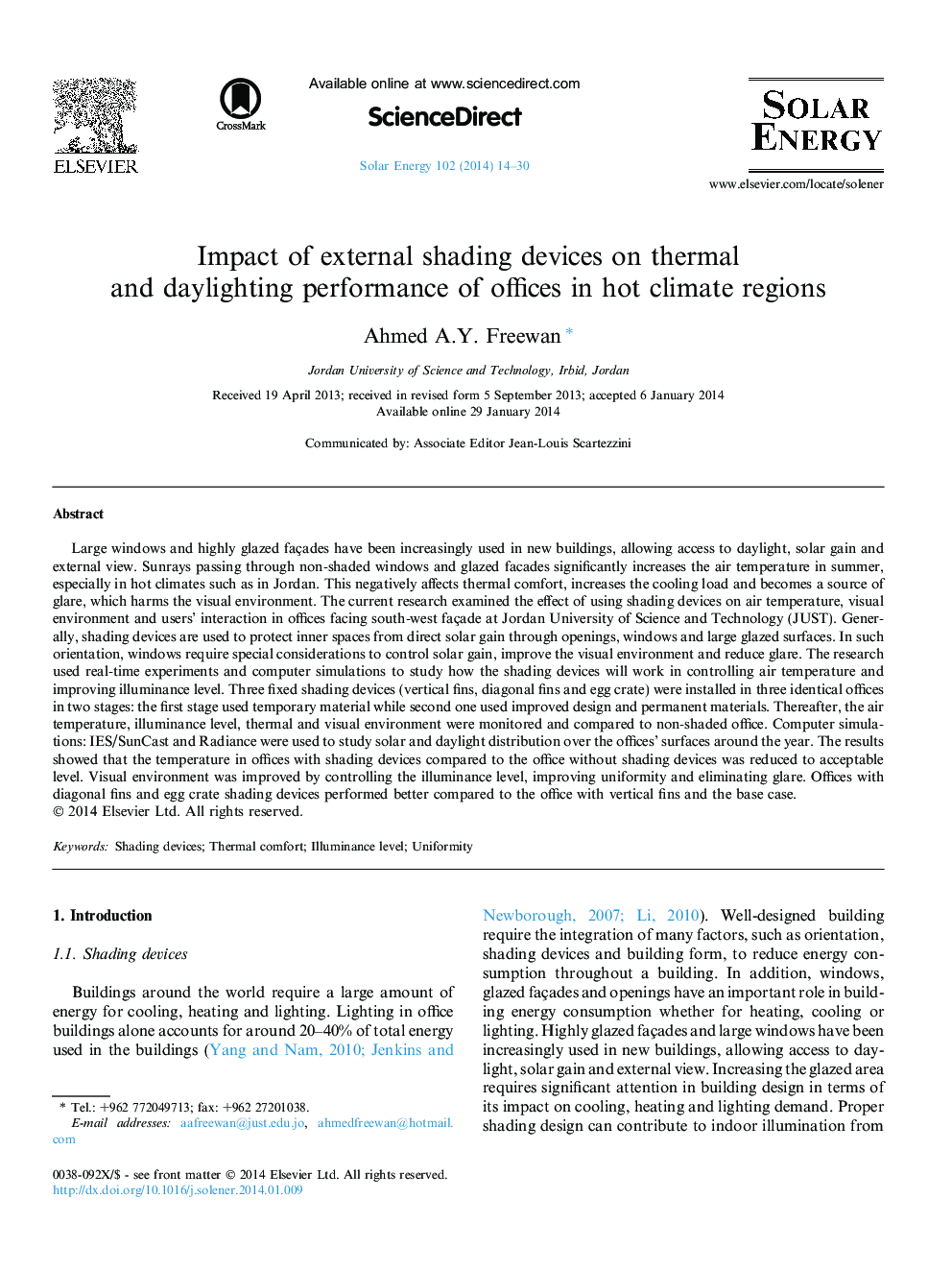| کد مقاله | کد نشریه | سال انتشار | مقاله انگلیسی | نسخه تمام متن |
|---|---|---|---|---|
| 1550127 | 1513116 | 2014 | 17 صفحه PDF | دانلود رایگان |
• Study shading devices under real conditions, by using many research tools.
• Study the effect of shading devices on heat absorption by different surfaces.
• Investigate how shading devices effect distributions of sunny and shaded areas.
• Explore how to integrate the solar gain, daylight distribution, and spaces use.
• Improve thermal and daylight performance by integrating with user behavior.
Large windows and highly glazed façades have been increasingly used in new buildings, allowing access to daylight, solar gain and external view. Sunrays passing through non-shaded windows and glazed facades significantly increases the air temperature in summer, especially in hot climates such as in Jordan. This negatively affects thermal comfort, increases the cooling load and becomes a source of glare, which harms the visual environment. The current research examined the effect of using shading devices on air temperature, visual environment and users’ interaction in offices facing south-west façade at Jordan University of Science and Technology (JUST). Generally, shading devices are used to protect inner spaces from direct solar gain through openings, windows and large glazed surfaces. In such orientation, windows require special considerations to control solar gain, improve the visual environment and reduce glare. The research used real-time experiments and computer simulations to study how the shading devices will work in controlling air temperature and improving illuminance level. Three fixed shading devices (vertical fins, diagonal fins and egg crate) were installed in three identical offices in two stages: the first stage used temporary material while second one used improved design and permanent materials. Thereafter, the air temperature, illuminance level, thermal and visual environment were monitored and compared to non-shaded office. Computer simulations: IES/SunCast and Radiance were used to study solar and daylight distribution over the offices’ surfaces around the year. The results showed that the temperature in offices with shading devices compared to the office without shading devices was reduced to acceptable level. Visual environment was improved by controlling the illuminance level, improving uniformity and eliminating glare. Offices with diagonal fins and egg crate shading devices performed better compared to the office with vertical fins and the base case.
Journal: Solar Energy - Volume 102, April 2014, Pages 14–30
